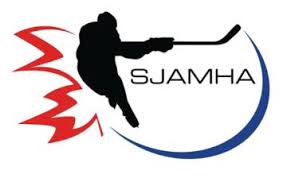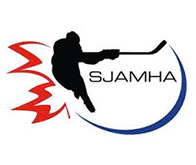Evaluation and Team Formation Process
updated 2025.
Evaluations
Things to note:
- each player will be given a tryout jersey at each check-in
- return tryout jersey after each session
Max Analytics
For the third consecutive year, SJAMHA evaluations will be conducted by Max Evaluations and Analytics.
View the evaluation and team formation process.
Max EA report cards
Max EA offers report cards based on player performance in evaluations. Report cards are not included in registration fees and can be purchased after evaluations if parents wish.
Tryout Convenors
SJAMHA hockey directors volunteer as tryout convenors to assist and help oversee evaluations so they run smoothly. Tryout convenors do not influence the evaluation process.
U7 (Timbits)
Evaluations do not typically take place at the U7 level as players are usually grouped with others from their local community club.
U9 (Novice)
Players at the U9 level can try out for the U9A team if they wish, but this is not mandatory. Players who do not opt to try out for U9A will be placed on a U9 House League team.
U11-U18
Evaluations are mandatory at these levels. Players who opt to not attend evaluations will be placed directly at the A3 level.
Players trying out for AA or AAA do not need to attend A1 evaluations unless player is released back to the SJAMHA area association. A1 evaluations will have a skate or two left after final release for evaluation of players.
AA
Players can choose to try out for the AA Thrashers at the U13, U15 and U18 levels
AAA
Players can choose to try out for AAA Thrashers at the U15 and U18 level.
Max Analytics and Evaluations
Since 2019, SJAMHA evaluations have been conducted by Max Analytics and Evaluation (Max AE), an independent hockey analytics organization.
Max AE will evaluate players on a number of criteria including:
- Skating - Acceleration, speed, mobility, agility, balance, stride, crossovers, pivots, acceleration out of turns, quick feet, controlled skating, change of pace.
- Passing - Delivering, receiving, choices, backhand, presenting target, control, touch passes.
- Puck Control - Head-up, smooth/quiet, good hands, protection, control in small spaces/traffic.
- Shooting - Power, accuracy, release, in motion, goal scorer, rebound control, variety of shots.
- Positional Play - Sees plays develop, moves to support, judgement and anticipation.
- Checking Concept - Angling, body position, balance/control, strong feet, making/taking checks.
Evaluation Convenors
SJAMHA hockey directors from various community clubs volunteer as evaluation convenors. Evaluation convenors roles include signing players in as they arrive to their sessions, distributing pinnies, communicating with parents about ice times and answering questions about the evaluation process. Evaluation convenors do not influence the evaluation of players or their placement at different levels.
Evaluation Sessions
All skaters will be evaluated a minimum of two or three times (depending on age level and program) and a maximum of four times. Goalies will have additional evaluations sessions. Max AE will send out notification emails two to five days before each evaluation session to notify players of their ice-times.
Bubble Skate
Within 72 hours of the conclusion of the second or third evaluation session, players at the top and bottom end of the age group pool may be notified by Max AE that their evaluations are concluded. A third or fourth and final evaluation, also known as a “bubble skate” is an opportunity for evaluators to assess players in the middle rankings one final time.
Report Cards
Max Analytics offers parents a report card that highlights a players strengths and skills they need to focus on based on the hundreds of data points that are collected by evaluators. The cost of the report card is the responsibility of the parent to pay for.
Absences
If a player is unable to attend an evaluation session due to injury or illness, please contact the evaluation convenor. No shows without any reason for not attending will receive a lower overall evaluation score due to missing a portion of the evaluation.
Coach Selection
Within a week of evaluations concluding for a particular age group, SJAMHA board members hold a coach selection meeting to select head coaches for teams based on applications and where their children have been placed.
Team Formation
Within ten days of evaluations concluding, team selection meetings are held, during which head coaches and SJAMHA board members determine which players will be placed on which teams based on their evaluation rankings. Immediately after the team formation meeting, players will receive communication about which team they have been placed on for the season. Players who register within the SJAMHA may or may not be placed on a team from their home community club due to roster size, team balance and coaching considerations.
View the detailed SJAMHA Player Evaluation and Team Formation Process .

